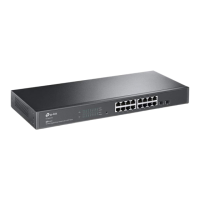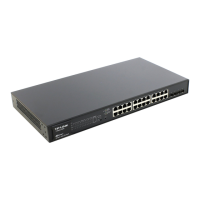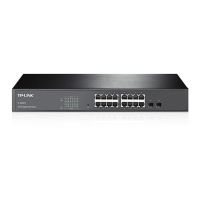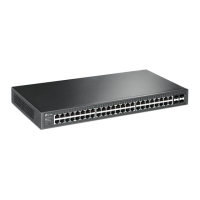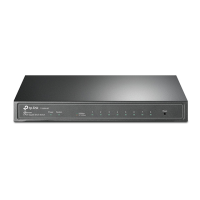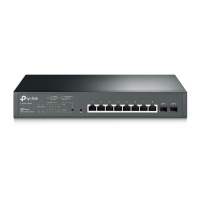Configuration Guide 134
Managing MAC Address Table Address Configurations
VLAN ID Specify an existing VLAN in which packets with the specific MAC address are
received.
Port Specify a port to which packets with the specific MAC address are forwarded. The
port must belong to the specified VLAN.
After you have added the static MAC address, if the corresponding port number
of the MAC address is not correct, or the connected port (or the device) has been
changed, the switch cannot forward the packets correctly. Please reset the static
address entry appropriately.
2) Click Create.
Binding Dynamic Address Entries
Choose the menu Switching > MAC Address > Dynamic Address to load the following
page.
Figure 2-2 Binding Dynamic MAC Address Entries
Follow these steps to bind dynamic MAC address entries:
1) Select your desired MAC address entries. You can select the entries from the Dynamic
Address Table, or quickly search them out by MAC address/ VLAN ID/ port in the
Search Option section.
2) Click Bind, and then the selected entries will not age.
Note:
•
In the same VLAN, once an address is configured as a static address, it cannot be set as a filter-
ing address, and vice versa.
•
Multicast or broadcast addresses cannot be set as static addresses.
•
Ports in LAGs (Link Aggregation Group) are not supported for static address configuration.

